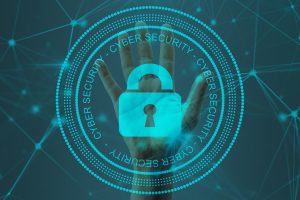As we all speed along on the digital highway, banks and financial institutions are increasingly hitching a ride on the technology bandwagon. It’s a speedy, sleek ride, but it comes with some unsavory hitchhikers—complex and escalating cybersecurity threats. Let’s get a grip on what these threats are and talk about how we can put up a good fight.
Table of Contents
The Sneaky Shadows of Advanced Persistent Threats (APTs)
First on our list are the APTs—think of them as the elite commandos of the cyber underworld. They’re usually well-funded, often with backing from state actors, and they’ve got their eyes on the prize. Their game? Long-term cyber attacks aimed at stealing sensitive data, messing up operations, or just setting the stage for bigger, badder assaults. And guess what? Financial institutions, with their treasure chests of juicy data and money, are at the top of their hit list.
To outsmart these APTs, financial institutions need to channel their inner chess grandmaster and think several moves ahead. It’s all about getting hands on advanced threat intelligence to spot threats before they show up at your door and routinely testing your systems to spot and fix any chinks in the armor. And don’t forget, your employees can be your best defense. Train them well to spot phishing and other sneaky tricks often used by APTs.
The Ransomware Bully
Ransomware attacks have taken off like a rocket in recent years and they’re a serious pain for financial institutions. In these attacks, hackers are the sneaky schoolyard bullies—they sneak into a network, lock up critical data, and then demand lunch money (or, you know, a small fortune) to give it back. These attacks can wreak havoc with services, lead to financial losses, and leave a nasty stain on the institution’s reputation.
To punch back against ransomware attacks, financial institutions should have strong backup plans in place so they can recover data without paying up. It also helps to have a strong security system at the end of your network, and threat detection capabilities to spot and quarantine attacks before they run amok.
The Third-Party Wild Cards
In our hyper-connected world, financial institutions often rely on third-party vendors for a variety of services. But these third parties can be a cybersecurity wild card if they don’t have strong security in place.
To keep third-party risks under control, financial institutions should be the nosy neighbor—regularly checking in on all vendors, and making sure they’re keeping their cyber house clean. And, of course, it’s always wise to ensure your contracts include clear rules for data protection, notifying you if there’s a breach, and how to respond if something goes wrong.
As we continue our sprint into the digital future, we can’t afford to ignore cybersecurity. The stakes are high, but with smart planning, constant vigilance, and being proactive, financial institutions can fend off these threats and keep on providing secure and reliable services to customers.
Our journey into securing our operations starts with knowing what we’re up against. Stay tuned as we dive deeper into a few more looming threats and how to thwart them in our next section.
The Domino Effect of Supply Chain Attacks
Let’s talk about another scary cyber bogeyman – the supply chain attack. Think of this as a hacker playing a game of dominoes, toppling one piece (or in this case, exploiting a vulnerability) to set off a chain reaction. For financial institutions, this could mean a weak spot anywhere from a hardware supplier to a cloud service provider.
Beating these supply chain attacks involves a bit of detective work – regular check-ups on all vendors in the supply chain to sniff out any potential loose ends. Plus, banks and financial institutions should think about putting in place secure software development practices and following a ‘trust no one’ approach, treating every access request as potentially suspect, no matter where it comes from.
The Mind Games of Social Engineering
And then there’s social engineering – where hackers turn into amateur psychologists, tricking people into handing over confidential information or doing things they shouldn’t. It’s a sneaky, non-technical way of breaking in, often by making employees break their own security procedures.
To combat these types of threats, banks need to invest in turning their staff into human firewalls. Regular security awareness training can help employees spot and respond correctly to social engineering tactics. Couple this with two-factor authentication and strict access controls, and you’ve got a solid line of defense
Conclusion
As we wrap up, let’s remember that the cybersecurity threats targeting the financial industry are like a complex, constantly changing puzzle. They need constant alertness, fresh thinking, and sturdy security measures. Keeping pace with the rapid world of cyber threats might seem like running on a never-ending treadmill, but it’s important to remember we’re not just doing this to protect the institution, but also the customers who entrust us with their money and personal data.
A flexible cybersecurity strategy – that includes keeping a close eye on things, educating staff, regularly checking vendors, strong data backup plans, and top-notch threat detection and response capabilities – can provide a sturdy shield. By recognizing these threats and taking the necessary steps to counter them, the financial industry can continue to flourish, offering its services with the assurance of secure and safeguarded operations.
